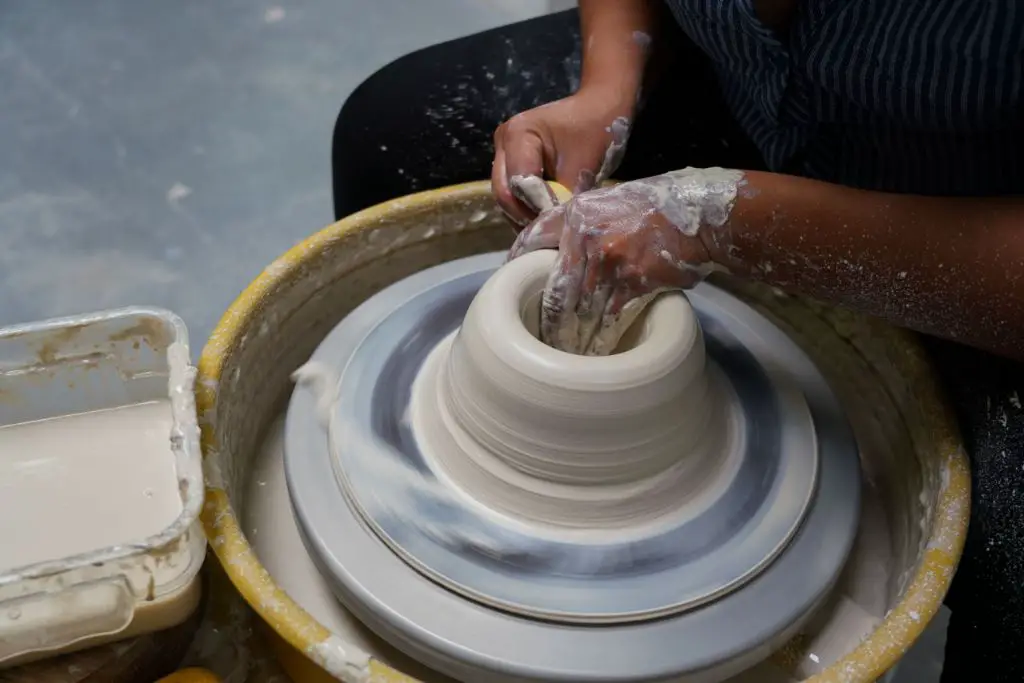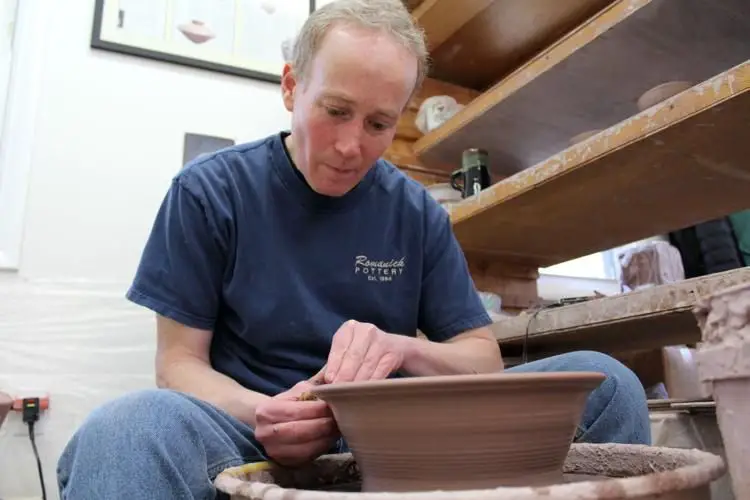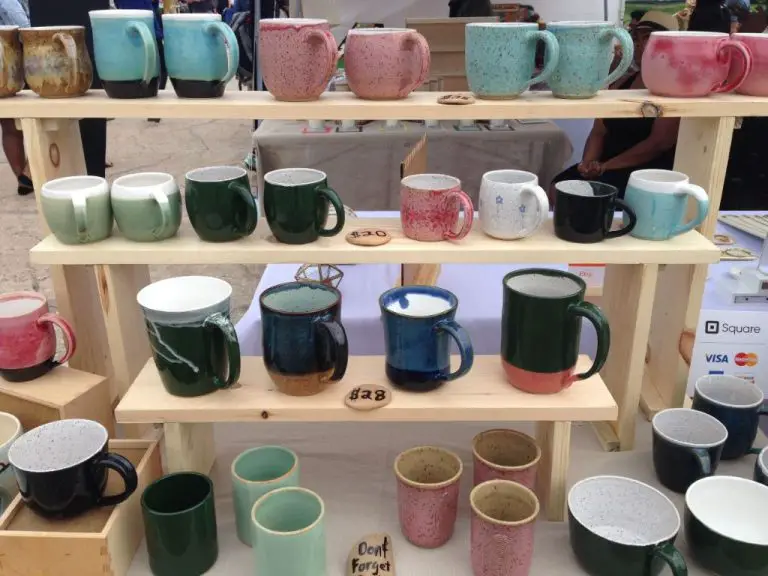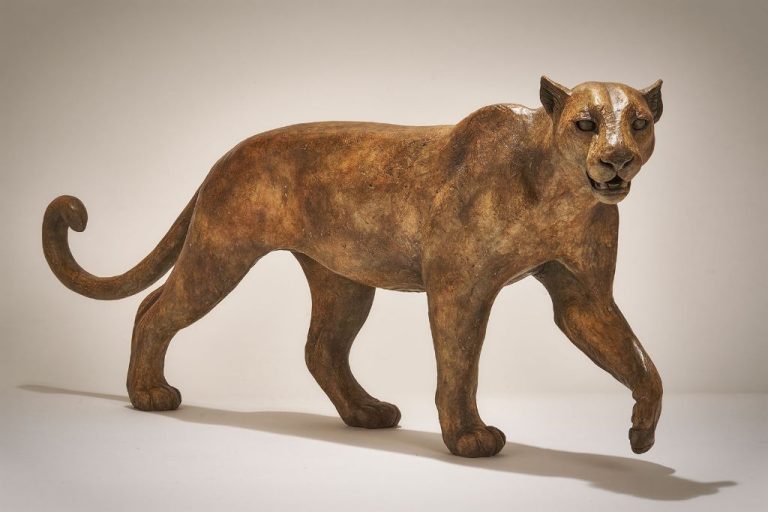What Can You Say About The Pottery Industry Today?
Pottery has a long and rich history dating back over 20,000 years. Some of the earliest known pottery vessels have been found in China and Japan, dating back to 18,000-17,000 BC. Pottery was also independently developed in Sub-Saharan Africa during the 10th millennium BC, and in South America during the 13th century BC
The most common techniques used in pottery are forming wares using clay, decorating wares using glazes and slips, and firing wares in kilns. Clay can be shaped into vessels by hand or using a potter’s wheel. Pots are decorated using techniques like stamping, carving, and painting. Firing pottery hardens the clay and can change its color, depending on the clay composition and maximum firing temperature.
Throughout history, pottery has served functional purposes like cooking, storage, and transport, while also being regarded as an artform by many cultures. There is an ongoing discussion around whether pottery should be classified as an art or craft. Those in favor of pottery as art point to the creative expression involved in designing and decorating wares. Those who see it as a craft focus more on the functional and utilitarian purposes.
Current Market
The pottery industry has experienced steady growth over the past decade. According to market research, the global ceramic and pottery market size was valued at USD 243.55 billion in 2020 and is projected to grow at a compound annual growth rate of 6.0% from 2021 to 2028.
Some of the major regions for pottery production today include East Asia, Southeast Asia, South Asia, the Middle East and South America. China is the dominant producer of ceramic and pottery products, accounting for over 50% of global production.
There are various types of potters operating today. Hobby potters create pottery as a pastime or small side business out of their homes. Small pottery studios consisting of a few artists are popular in local communities. Large-scale manufacturers mass produce ceramic products and distribute to retailers around the world.
Overall the pottery industry comprises large manufacturers, small-scale artisan studios, independent artists and hobbyists. Advancements in materials, kilns and wheel technology have made pottery more accessible as an art form and small business.
Notable Pottery Styles
Pottery styles vary greatly across cultures and regions, with artisans employing diverse techniques to create unique wares. Some major styles include:
Raku – Originating in 16th century Japan, raku involves removing pots from the kiln while still red hot and placing them into containers with combustible materials like sawdust. This produces random crackling and coloring effects. Raku is prized for its unpredictable results.
Sgraffito – Popular in Europe, sgraffito pots are first coated in colored slips or engobes, then scratched or etched to reveal the contrasting layer underneath. Sgraffito decoration often features intricate line drawings.
Majolica – This Italian tin-glazed style features brightly colored decorative paintings on pottery. Majolica derives influences from Moorish Spain and gained popularity during the Renaissance.
Regional styles also abound, like the black and red figured wares of ancient Greece, Chinese celadons, and Anasazi pottery of the American Southwest. Potters worldwide draw inspiration from other cultures, mixing techniques to invent new styles. The global exchange propels continued evolution in the potter’s art.
Prominent Potters
Some of the most influential potters working today include Sara Fina Tafoya, Mary Histia, and Vasyl Omelianenko. Tafoya comes from a long line of Santa Clara Pueblo potters and is considered one of the most famous potters today. Of the older generation, there are Tsayutitsa, Mary Histia, Arroh-ah-och, Toña Peña Vigil, and others. None sought fame but they exemplified the highest standards in their art (“Sara Fina Tafoya Large Black Santa Clara Pueblo Jar [SOLD],” n.d.).
Mary Histia is a distinguished Tewa potter from Santa Clara Pueblo who learned pottery making from her mother. She is known for continuing the blackware pottery tradition with thin walls and polished surfaces. Histia has received awards at the Santa Fe Indian Market and her work is housed in major museum collections (Santa Fe Indian Market, n.d.).
Vasyl Omelianenko is one of the most famous Ukrainian potters working today in Opishnya. He comes from a long lineage of ceramic artists and is known for his distinctive style and mastery of ceramic techniques. His work has received numerous awards and is collected internationally (“Opishnia ceramics”, n.d.).
Tools and Materials
The tools and materials used in pottery have evolved significantly over the centuries. The potter’s wheel and kiln are key innovations that have shaped pottery techniques. Early potters shaped clay vessels by hand, but the wheel enabled faster and more consistent production. Kilns allow potters to fire clay at high temperatures for increased durability. Modern potters use electric or kick wheels and electric, gas, wood, or raku kilns.
Clay sourcing and preparation is fundamental to quality pottery. Most potters use stoneware or porcelain. Stoneware contains minerals that vitrify at high temperatures, while porcelain is a highly refined white clay. Clays are primarily sourced from deposits in places like North Carolina and Kentucky in the US. Natural clays are often blended and refined to achieve desired properties.
Glazes and pigments provide decorative color and effects. Glazes are made from silica, fluxes, and colorants like metal oxides. They vitrify when fired to create a glass-like coating. Popular glaze techniques involve layering colors. Underglazes and engobes are also used. Pigments can be applied over base coats for painted designs. Many potters make their own unique glazes and pigments.
Key Techniques
There are two main techniques for creating pottery – handbuilding and throwing on a potter’s wheel. Handbuilding involves creating pottery by hand without the use of a wheel. Some common handbuilding techniques include pinching, coiling, and using slabs. Throwing involves shaping clay on a rotating potter’s wheel using your hands. Skilled potters can quickly shape and form vessels with uniform sides using the wheel.

Another key technique is firing and glazing. Clay must be fired in a high temperature kiln which causes chemical changes that permanently harden the clay. Glazes are coatings applied before firing that create a glassy surface and decorate the pottery. There are many methods for glazing and decorating pottery including slip trailing, sgraffito, mishima, and more.
Art vs Craft Debate
The debate over whether pottery should be considered fine art or craft has brewed within artistic circles for decades. Some argue pottery deserves recognition among respected art forms like painting and sculpture. Others contend pottery is merely a functional craft without the same creative merit.
Those who advocate for pottery as fine art highlight the immense creativity and artistic expression involved in designing and executing pottery pieces. Like painting or drawing, potters make aesthetic choices about shape, color, texture, pattern, and composition to reflect their artistic vision. Works can symbolize profound concepts or emotions. The finished products showcase great skill and can be as visually striking as any canvas.
Critics argue pottery lacks deeper meaning beyond decoration or utility. As a historically functional craft for cooking or storage, pottery is arguably more commercial product than artistic creation. Some claim the practical purposes of pottery diminish its value as pure artistic expression. Its repetition and mass production is also seen as misaligned with fine art’s uniqueness.
Increasingly, the boundaries between fine art and craft have blurred. The talent to sculpt clay into beautiful, symbolic forms is rarely disputed. Many acclaimed art museums now exhibit and collect contemporary pottery as they would paintings or photography. With its rich history and intersection of form and function, pottery may represent a union of art and craft.
Future Outlook
The pottery industry is projected to see continued market growth in the years ahead. According to research, the global ceramic and pottery market is expected to reach $243 billion by 2027, representing a CAGR of 9.2% from 2020-2027.[1]
Some key innovations that will shape the future of pottery include new materials like paperclay and raku clay that enable more creative forms, as well as digital manufacturing processes like 3D printing that allow for greater customization and precision.[2] Sustainability efforts are also growing, with potters focused on reducing waste, recycling clay scraps, and developing more energy-efficient kilns and glazes.
Overall, the future looks bright for pottery as artists blend tradition with innovation to meet demand for unique, eco-friendly wares. The industry is reinventing itself while still honoring ancient pottery crafts and culture.
[1] https://www.globenewswire.com/news-release/2020/06/16/2049213/0/en/Ceramics-and-Pottery-Market-to-reach-USD-243-12-Billion-by-2027-CAGR-of-9-2-Ceramic-and-Pottery-Industry.html
[2] https://benjdeyro.wordpress.com/2015/10/30/isabela-town-holds-on-to-pottery-as-flagship-product/
Challenges
The pottery industry faces several challenges that threaten its future viability. One major challenge is competition from cheaper imports, especially from countries like China and India where labor costs are lower (Gurung, 2018). Many handmade ceramic products can be produced faster and more cheaply overseas using industrial methods and equipment. This makes it difficult for local potters to compete on price while maintaining quality.
Another issue is the lack of young people entering the field to replace retiring potters. Most potters develop their skills over decades through apprenticeships and hands-on practice. With fewer young apprentices learning these techniques, traditional knowledge is in danger of being lost (Nepal, 2021). Financial instability and low wages often deter younger generations from pursuing pottery full-time.
There is also a constant tension between maintaining artistic integrity versus compromising quality to meet market demands. Some potters feel pressure to simplify designs or use cheaper materials, which can undermine the value of their work. Balancing business needs and creative ideals is an ongoing struggle (Shrestha, 2018).
Conclusion
The pottery industry has a rich history and important cultural traditions. While the debate continues around pottery as art versus craft, there is no question that pottery has been an integral part of human civilization for thousands of years.
Today’s potters carry on ancient techniques while also innovating with new styles, materials, and technologies. The field faces challenges in reaching new audiences and competing with mass production, but passionate potters aim to keep their craft alive.
Pottery persists as a unique blend of form and function that connects us to humanity’s origins while allowing individual expression. As long as there are those willing to get their hands dirty at the wheel, the future of pottery looks promising.




